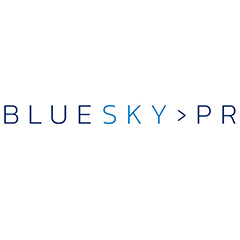Our global economy has hit a new milestone: for the first time in history, it is consuming 100 billion tons of materials a year. Parallel to this, the global reuse of resources is in reverse, with the global circularity rate falling from 9.1% in 2019 to 8.6% in 2020. In reversing this trend, the built environment is a prominent sector to consider as it is the world’s most material intensive sector consuming 42.4 billion tonnes annually.
By 2050, the European building stock alone will have grown by 13%. Within this sector, sustaining and extending the lifetime of buildings and infrastructure and appreciating the future value of built assets can have great impacts in reducing the CO2 footprint and becoming more circular.
In their latest research in collaboration with Nyenrode Business University, the Coalition Circular Accounting explores the ambition of three Dutch facade builders — Alkondor, Blitta and De Groot & Visser, offering Facade-as-a-Service as a method to battle waste and increase the circularity of buildings, helping to solve these pressing issues.
This is a pilot for a customisable, dismantlable facade that provides a building with ventilation, sunlight regulation and energy generation, all adjustable by remote control. Instead of being sold, this facade will be used as a service and consequently remain in possession of its builders. However, current financing models can present major barriers for companies with circular business aspirations.
In light of the current and persistent financing barriers facing circular companies in the built environment, the Coalition Circular Accounting has launched a white paper that elaborates on the opportunities and risks of Product-as-a-Service business models. They have four main takeaways:
- We need to take off our linear glasses.
We tend to view circular business models from a traditional perspective. Product-as-a-Service (PaaS) is characterized by access to the product, the performance of the product and the services around the product. With Product-as-a-Service, the value for the consumer does not lie in owning the product but in the option to use a service, thereby unburdening the consumer from the responsibility for maintenance and repairs.
- Balance sheet extension as the holy grail instead of a liability.
A Product-as-a-Service company is often asset-heavy. Namely, ownership shifts from the consumer to the service provider. Therefore, one cannot simply compare PaaS companies with traditional companies. PaaS companies keep control of their assets which is reflected in a growing balance sheet. Where a growing balance nowadays is still interpreted as risky, in the circular economy this will signal that companies are taking long term responsibility for their products.
- ‘Residual value’ is a term from the traditional take-make-waste society; change the term and you change the thinking.
A fundamental principle of the circular economy is the infinite use of raw materials. Assigning a value to these resources is essential, wherever they are. The term residual value (the estimated value of an asset at the end of its useful life) detracts from this circular idea. That is why we prefer to talk about harvest value. Harvest value is not only important in principle, it can also be the decisive factor for the success of a circular business model since it creates new business opportunities by for example serving as security for financing
- Legal structures as transition accelerators.
In the transition to a circular economy, we regularly run into laws and regulations that are obstructive or lacking. In the circular economy—as is the case with Product-as-a-Service—it may be opportune to shift ownership from a consumer to a service provider. In the built environment, this leads to problems because building components that are offered as a service legally become part of the building (otherwise known as accession). That is why new legal structures have been created that make Product-as-a-Service in the building sector easier to implement.
- Adapt current regulation standards to overcome the catch 22 of financiers
Financiers are attempting to translate new circular business models into appropriate financing structures. Pre-financing assets are at the core of the Product-as-a-Service business model. The underlying security of Product-as-a-Service is a combination of the cash flows and harvest value of the assets. Because the Product-as-a-Service model is still not commonly used and financiers have to operate within the current standards of the regulators, the market is still reluctant to finance these types of business models. The interpretation of financial ratios and underlying securities must be adapted to circular thinking.
The Netherlands Institute of Chartered Accountants (NBA) and Circle Economy founded the Coalition Circular Accounting to identify accounting related challenges in the circular economy. Unlocking Legal, Financial and Accounting Barriers in the Circular Built Environment
Together they create solutions and best practices to overcome these barriers.
Find the report here to learn more.



























